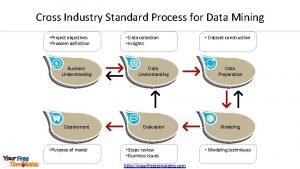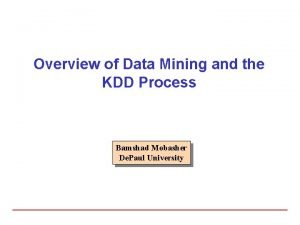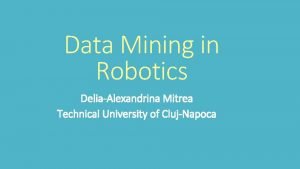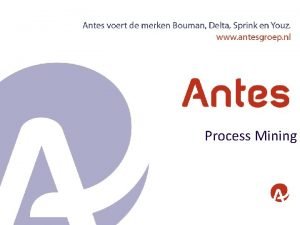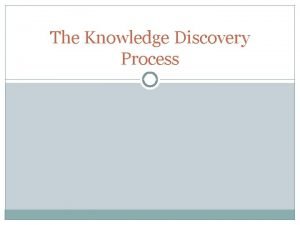Data Mining Data mining is the process of











- Slides: 11

Data Mining

• Data mining is the process of discovering interesting patterns and knowledge from large amounts of data. • The data sources can include databases, data warehouses, the Web, other information repositories, or data that are streamed into the system dynamically.

• Data mining also said to be knowledge mining form data or knowledge discovery from data • The knowledge discovery process involves an iterative sequence

• The Explosive Growth of Data – From terabytes (10004 to yottabyteds (10008) • Science – Bioinformatics – Scientific stimulation – Medical research • With the rise of high-throughput (HTP) technologies in the life sciences, particularly in molecular biology, the amount of collected data has grown in an exponential fashion

• Data rich but information poor – What does those data mean? – How to analysis data? Data mining – Automated analysis of massive data sets


• 1. Data cleaning (to remove noise and inconsistent data) • 2. Data integration (where multiple data sources may be combined) • 3. Data selection (where data relevant to the analysis task are retrieved from the database)

• 4. Data transformation (where data are transformed and consolidated into forms appropriate for mining by performing summary or aggregation operations) • 5. Data mining (an essential process where intelligent methods are applied to extract data patterns)

• 6. Pattern evaluation (to identify the truly interesting patterns representing knowledge based) • 7. Knowledge presentation (where visualization and knowledge representation techniques are used to present mined knowledge to users)

• Steps 1 through 4 are different forms of data pre-processing, where data are prepared for mining • The data mining step may interact with the user or a knowledge base • The interesting patterns are presented to the user and may be stored as new knowledge in the knowledge base.

Data Warehousing
 Mining complex types of data in data mining
Mining complex types of data in data mining Mining multimedia databases in data mining
Mining multimedia databases in data mining What is data mining and data warehousing
What is data mining and data warehousing Semma model
Semma model Kdd process
Kdd process Data mining driven manufacturing process optimization
Data mining driven manufacturing process optimization Strip mining vs open pit mining
Strip mining vs open pit mining Strip mining before and after
Strip mining before and after Difference between strip mining and open pit mining
Difference between strip mining and open pit mining Web text mining
Web text mining Data reduction in data mining
Data reduction in data mining What is missing data in data mining
What is missing data in data mining



